In October 1998, Singapore Airlines announced that it would be abandoning Passages, the joint frequent flyer programme shared with Cathay Pacific and Malaysia Airlines, and launching its own scheme called KrisFlyer.
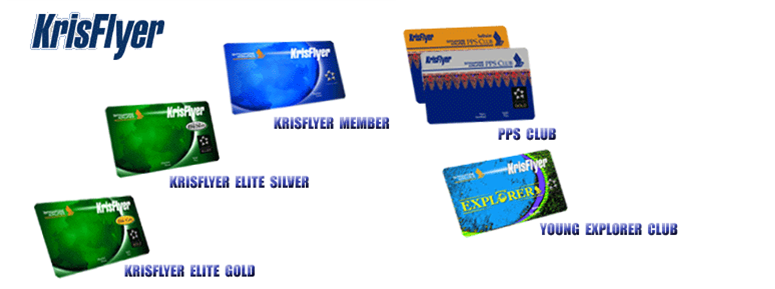
Unlike the thinly-veiled elitism of Passages, which was only for First and Business (sorry, Raffles) Class passengers, KrisFlyer was be a programme for the everyman- even Economy Class passengers were welcome to participate!
SIA Press Release
| 📰 SIA Press Release |
|
SIA unveils KrisFlyer, the new frequent flyer programme for all classes Singapore Airlines (SIA) today announced its own frequent flyer programme, KrisFlyer. The new programme will enable customers in all three classes — First, Raffles and Economy — to earn mileage credits that can be redeemed for free travel awards. Enrolment begins immediately. Members can begin earning and redeeming mileage in KrisFlyer from 1 February 1999. KrisFlyer is SIA’s first proprietary frequent flyer programme and follows hot on the heels of the Airline’s recent S$500 million product launch, which features new cabin interiors in all three classes. Enhanced ground services and innovative inflight cuisine, created by a panel of world-famous chefs, also form part of the new product. With KrisFlyer, miles will be awarded not only for travel on SIA services, but also for journeys on SIA’s subsidiary regional airline, SilkAir, or on any of the KrisFlyer partner airlines, namely Air New Zealand, All Nippon Airways, Ansett Australia, Asiana Airlines, Delta Air Lines and Lufthansa. KrisFlyer members who travel frequently on SIA and SilkAir will enjoy elite status and additional benefits. In addition to qualifying for elite status, First and Business Class customers on SIA and SilkAir will have to opportunity to qualify for SIA’s PPS Club, an exclusive loyalty scheme that recognises and accords special privileges to SIA’s priority passengers. Existing PPS Club members, and Passages members who have travelled in First or Business Class with SIA, will be automatically enrolled into the KrisFlyer programme. Members will also be able to earn KrisFlyer miles with some of the best global hotel chains, credit or charge cards, and car rental agencies. Members need quote only their KrisFlyer membership number when making a reservation or when utilising the service of one of SIA’s non-airline partners worldwide. New partners, airline and non-airline, will be introduced progressively. Children under 12 who qualify for KrisFlyer automatically become KrisFlyer Explorers, a new Young Explorer Club that caters to the needs of SIA’s young jetsetters. Said SIA’s Senior Vice President (Marketing Planning), Mr Huang Cheng Eng: “KrisFlyer complements our new product, which has been widely acclaimed as the best in the industry. We want our customers to enjoy travelling with SIA and at the same time be rewarded with travel benefits for their support. KrisFlyer offers some of the best mileage award levels. International free travel awards start at just 15,000 miles.” Mr Huang said the introduction of KrisFlyer means that SIA’s Economy Class has been completely upgraded in all respects. “Now, our Economy Class passengers are not only offered more comfortable seats and served champagne on board, but can enjoy these frequent flyer rewards as well,” he said. The creation of the new programme follows the decision by Singapore Airlines, Cathay Pacific Airways and Malaysia Airlines to discontinue their joint frequent flyer programme, Passages, to pursue individual programmes. Enrolment forms are available at SIA ticket offices, Silver Kris airport lounges, check-in counters and on board SIA and SilkAir services. Forms are also available at travel agencies. |
KrisFlyer debuted in February 1999, and this month we celebrate its 25th anniversary. Love it or loathe it, it’s the lingua franca of the miles game in Singapore. I’d hazard a guess that KrisFlyer accounts for at least 80% of all credit card points transfers here- probably even more.
I’ve been researching a couple of articles to mark this milestone, and one of the things I was hunting for was the original KrisFlyer award chart. After hours of fiddling with the Wayback Machine, I finally struck gold.
| 📜 The Sacred Texts! |
 |
I am now the proud owner of every single KrisFlyer award chart since 1999, which means I can finally pen an article tracking devaluations and programme changes for the past quarter century!
But let’s first turn back the clocks to 1999. Everyone’s freaking out about the impending Y2K apocalypse. Bill Clinton’s on trial for improper cigar storage. You’re a newly-minted KrisFlyer member.
What can you expect?
Overview: KrisFlyer, circa 1999
The original KrisFlyer programme was quite different from what we have today, so some background is in order.
Award types
| ✈️ KrisFlyer Award Chart (1999) |
|||
| Economy Saver | Normal |
Business | First | |
| 🇲🇾 Malaysia | 15 | 30 | 35 | 50 |
| 🇹🇭 Thailand | 25 | 35 | 40 | 60 |
| 🇭🇰 Hong Kong | 30 | 45 | 50 | 70 |
| 🇯🇵 Japan | 40 | 60 | 65 | 95 |
| 🇮🇳 India | 50 | 70 | 80 | 120 |
| 🇹🇷 Turkey | 50 | 70 | 80 | 120 |
| 🇦🇺 Australia (Perth, Darwin) | 40 | 60 | 65 | 95 |
| 🇦🇺 Australia (ex-Perth, Darwin) | 50 | 75 | 85 | 130 |
| 🇿🇦 South Africa | 50 | 75 | 85 | 130 |
| 🇪🇺 Europe | 60 | 90 | 110 | 165 |
| 🇺🇸 USA (West Coast) | 65 | 95 | 115 | 180 |
| 🇺🇸 USA (East Coast) | 75 | 105 | 130 | 195 |
KrisFlyer offered four different types of awards:
- Economy Saver
- Economy
- Business
- First
Economy Class was the only cabin with two sub-types; Saver awards were, on average, 50% cheaper than regular Economy awards.
Business and First Class only had a single award type. These were later redesignated Business Saver and First Saver in October 2003, when KrisFlyer introduced Business Unrestricted and First Unrestricted awards (the forerunner of today’s Advantage awards) that cost twice as many miles.

While you could use your KrisFlyer miles to book and upgrade Singapore Airlines award tickets, you couldn’t do the same for Star Alliance partners. Star Alliance awards were only introduced in June 2002 (and we had to wait until 2017 before we could book them online!)

However, you could book award tickets with Delta and United Airlines! These partnerships predated Singapore Airlines’ entry into Star Alliance, and interestingly enough, parity was maintained between SIA and United for awards between Singapore and the USA.
Award chart segmentation
The KrisFlyer award chart divided the world into 12 different zones, one fewer than today (Japan used to be grouped together with China, but is now its own award zone).
| 🌎 KrisFlyer Award Zones | |
| Zone 1 |
|
| Zone 2 |
|
| Zone 3 |
|
| Zone 4 |
|
| Zone 5 |
|
| Zone 6 |
|
| Zone 7 |
|
| Zone 8 |
|
| Zone 9 |
|
| Zone 10 |
|
| Zone 11 |
|
| Zone 12 |
|
12 zones, mind you, is nothing compared to the 23 (!) used between 2003 and 2007.
Said Singapore Airlines at the time:
The new award charts will include more flight zones – 23 instead of the previous 12 – ensuring that each region is more accurately represented while making redemption travel much easier to understand.
-SIA, 2003
Also Singapore Airlines, four years later:
To simplify the award charts, the number of zones will be reduced from the current 23 to 14.
-SIA, 2007
Ah well.
Companion tickets
Those who had a commercial ticket in First or Business Class could use their miles to redeem a companion ticket at a discounted rate (the idea was that a business traveller whose company paid for their ticket could bring along their spouse).
For example, a round-trip Business Class ticket from Singapore to New York normally cost 130,000 miles. A companion award brought that down to 105,000 miles- not a huge discount, but if someone else was already paying for your commercial ticket, why not?
Companion awards were discontinued in 2007.
Other rules
One of the biggest annoyances of the nascent KrisFlyer programme was that only round-trip awards could be redeemed. One-way awards were not possible until October 2003, and even then, they were poor value at 70% of the round-trip price (the current 50% pricing we enjoy only began in 2008).
Also, if you didn’t have enough miles for an award, tough luck. The ability to top-up miles for a redemption was only added in October 2003, though at US$40 per 1,000 miles (a price that’s unchanged till today) it’s really only an option for the most desperate!
One stopover per round-trip award could be added for 15,000 miles in Economy, 25,000 miles in Business, and 40,000 miles in First Class. But since you couldn’t book one-way awards, there was no way of taking advantage of the “stopover trick” back then. Stopovers were more for overseas KrisFlyer members who wanted to explore Singapore between legs, or Singapore-based members who wanted to explore one of SIA’s transit points.
How did you book an award?
Well, you didn’t hop on your computer, that’s for sure.
Even though you could book Singapore Airlines commercial tickets online, redemption capability was still four years away. To redeem your miles, you had to pick up the phone, fax in a form, or head down to a service centre to get things done.
In fact, a lot of things were frustratingly manual. Wanted to add a redemption nominee? One form. Missing miles? Another form.

Thank goodness those days are long gone.
Were there fuel surcharges?
Thankfully, no. Fuel surcharges were only introduced in June 2004, and remained an annoying feature of the programme until March 2017.
How do award prices compare?
The absence of fuel surcharges allows us to make a cleaner comparison of the mileage requirements in 1999 versus 2024, which throws up some interesting insights.
First Class
| ✈️ Round-Trip First Class Awards (in ‘000s of KrisFlyer miles) |
|||
| From SIN to | 1999 | 2024 | Δ Change YoY (’99-’24) |
| 🇲🇾 Malaysia | 50 | N/A | – |
| 🇹🇭 Thailand | 60 | N/A | – |
| 🇭🇰 Hong Kong | 70 | 90 | 29% 1% |
| 🇯🇵 Japan | 95 | 154 | 62% 2% |
| 🇮🇳 India | 120 | 117 | -3% -0.1% |
| 🇹🇷 Turkey | 120 | N/A | – |
| 🇦🇺 Australia (Perth, Darwin) | 95 | N/A | – |
| 🇦🇺 Australia (ex-Perth, Darwin) | 130 | 187 | 44% 1.5% |
| 🇿🇦 South Africa | 130 | N/A | – |
| 🇪🇺 Europe | 165 | 282 | 71% 2.2% |
| 🇺🇸 USA (West Coast) | 180 | 293 | 63% 2% |
| 🇺🇸 USA (East Coast) | 195 | 297 | 52% 1.7% |
When comparing First Class awards between 1999 and 2024, you need to remember that there’s been a fundamental shift in the airline industry away from First Class.

Unlike other airlines, SIA hasn’t done away with the cabin, but it’s significantly scaled down the capacity and routes. In 1999, you could fly First Class to Kuala Lumpur; these days, First Class is only found on the A380-800 and B777-300ER, and predominantly on long-haul routes.
That said, we can see that the cost of a First Class award has increased by up to 71%, with an annualised increase ranging from -0.1 to 2.2%. The increases in some cases are modest. First Class to Hong Kong only costs 20,000 miles more now than 25 years ago, and First Class to India has is actually cheaper now than in 1999!
For long-haul travel to Australia, Europe and the USA, however, the changes are more pronounced. The same number of miles that would get you to New York in 1999 will only take you to Sydney in 2024.

Of course, that’s only to be expected with premium cabins getting less and less dense. A B747-400 had 12 First Class seats; the A380-800 has just six, and the B777-300ER four. Put it another way, opening a First Class seat for awards on the B747-400 meant forgoing the opportunity to earn 8% of the cabin’s revenue. On the A380, its 16%.
Business Class
| ✈️ Round-Trip Business Class Awards (in ‘000s of KrisFlyer miles) |
|||
| From SIN to | 1999 | 2024 | Δ Change YoY (’99-’24) |
| 🇲🇾 Malaysia | 35 | 42 | 20% 0.7% |
| 🇹🇭 Thailand | 40 | 48 | 20% 0.7% |
| 🇭🇰 Hong Kong | 50 | 68 | 36% 1.2% |
| 🇯🇵 Japan | 65 | 104 | 60% 1.9% |
| 🇮🇳 India | 80 | 86 | 8% 0.3% |
| 🇹🇷 Turkey | 80 | 113 | 41% 1.4% |
| 🇦🇺 Australia (Perth, Darwin) | 65 | 81 | 25% 0.9% |
| 🇦🇺 Australia (ex-Perth, Darwin) | 85 | 137 | 61% 1.9% |
| 🇿🇦 South Africa | 85 | 113 | 33% 1.1% |
| 🇪🇺 Europe | 110 | 207 | 88% 2.6% |
| 🇺🇸 USA (West Coast) | 115 | 214 | 86% 2.5% |
| 🇺🇸 USA (East Coast) | 130 | 223 | 72% 2.2% |
The increase in Business Class award prices for short and medium-haul travel are small. Bali and Bangkok only cost 7,000 and 8,000 more miles respectively, and 16,000 more miles for Perth over 25 years feels fair enough.
For long-haul travel, however, the changes are close to 2X. A Business Class ticket to London, Frankfurt, Paris or any other European destination now costs 207,000 miles, versus 110,000 miles in 1999. Similar increases can be seen for the USA.
But to put things in perspective, the comfort offered in Business Class today is closer to that of First Class at the turn of the century. Business Class in 1999 was nothing more than a bigger recliner seat with better catering. If you wanted the comfort of a full flat bed, First Class was the only option.

Economy Class
| ✈️ Round-Trip Economy Class Awards (in ‘000s of KrisFlyer miles) |
|||
| From SIN to | 1999 | 2024 | Δ Change YoY (’99-’24) |
| 🇲🇾 Malaysia | 15 | 17 | 13% 0.5% |
| 🇹🇭 Thailand | 25 | 27 | 8% 0.3% |
| 🇭🇰 Hong Kong | 30 | 33 | 10% 0.4% |
| 🇯🇵 Japan | 40 | 54 | 35% 1.2% |
| 🇮🇳 India | 50 | 40 | -20% -0.9% |
| 🇹🇷 Turkey | 50 | 58 | 16% 0.6% |
| 🇦🇺 Australia (Perth, Darwin) | 40 | 43 | 8% 0.3% |
| 🇦🇺 Australia (ex-Perth, Darwin) | 50 | 61 | 22% 0.8% |
| 🇿🇦 South Africa | 50 | 58 | 16% 0.6% |
| 🇪🇺 Europe | 60 | 84 | 40% 1.4% |
| 🇺🇸 USA (West Coast) | 65 | 84 | 29% 1% |
| 🇺🇸 USA (East Coast) | 75 | 88 | 17% 0.6% |
It’s the Economy Class chart that packs the biggest surprise, because, with some limited exceptions, prices have barely budged. Malaysia, Thailand, Hong Kong, Perth and Darwin all cost virtually the same, and there’s no increase in Economy Class pricing that’s more than 24,000 miles.
This is all the more remarkable when we consider how much easier miles are to earn now compared to 1999 (they didn’t have Citi PayAll back then, I can tell you that!). Given what we know about miles inflation, I’d say that Economy prices today are cheaper than 25 years ago.
Young Explorer programme
I’ve not even got to the best part yet.
If you were aged 12 and below, your KrisFlyer membership was tied to the Young Explorer programme, which actually predates KrisFlyer (it started in 1994).
Does anyone remember the Young Explorer Club, Singapore Airlines’ FFP for kids?
Young Explorer was one heck of a gateway drug, getting kids hooked on the status chase and miles game early (or should I say “kilometers”, since that was how qualification was determined). I remember bugging my dad to schedule another flight that year just so I could requalify for Ace Explorer.
| Tier | Requirement |
 Expert Explorer Expert Explorer |
50,000 km |
 Ace Explorer Ace Explorer |
75,000 km |
 Master Explorer Master Explorer |
100,000 km |
Young Explorer elite status didn’t give you lounge access or priority baggage tags, but you did get qualification gifts that made you feel extra special, like a watch and stereo player. You also got a monthly magazine, the pilot signed your passport on every flight, and there were periodic special events like movie screenings- just like PPS Club!
But the best part of all was that you got a membership card of your own that you could plonk down at the counter during check-in, just like an adult.
Sadly, Young Explorer was discontinued in 2006, and plain vanilla KrisFlyer is all you can expect now, regardless of age.
Conclusion
Singapore Airlines KrisFlyer has come a long way in 25 years, and now boasts more than eight million members worldwide. It’s hard to imagine SIA without it, even though the airline has actually existed longer without KrisFlyer (27 years) than with it!
Award prices have, of course, gone up in the time since, but I was surprised to see that Economy Class redemptions have only appreciated modestly- perhaps even decreased, if you factor in how easy it is to earn miles now.
We’ll have a better picture of the evolution of award pricing once I’ve had the time to go through all 25 years of data.
Any other memories of KrisFlyer, circa 1999?



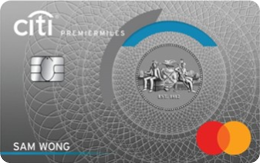
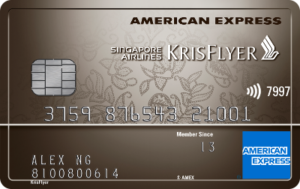
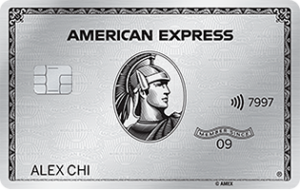
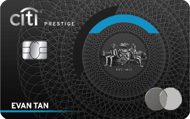
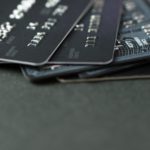


Informative article – thank you. Very interesting to see that for all we complain about devaluations, award redemptions have actually remained pretty constant when adjusted for inflation, particularly when you consider what first class got you in 1999 vs first/suites in 2024!
You’re comparing Saver award today with 1999. There’s very limited Saver availability. If you consider Advantage award, then the increase is even more pronounced, across the board
Sure- but I have no basis for comparing how many award seats were available then vs now. I’m just looking at lowest possible cost for both periods.
While it was true that one-way redemptions were expensive (70% of roundtrip), you could do open-jaw roundtrips. I remember redeeming SIN-CDG BRU-SIN as a roundtrip. But yes, everything had to be done over the phone, or at the service center in Paragon (the land where Ion stands today was an open field then).
Oh interesting! Thanks for sharing that. I remember the paragon service centre actually, I went there once with my dad and got free coke. It was a happy day
The biggest difference between then and now is the lack of miles earning cards then. I remember the generic KF Amex, which gave a mile per S$1.60 spend (as that was roughly equivalent to US$1). I also remember the PPS version of it though I don’t remember the added benefits. You compared the premium class seats but some of your readers may find it interesting that VOD wasn’t a thing until the mid aughties. For a long while there was a mix of VOD and non VOD equipped aircraft in the regional 772 and 773 fleet. I had calculated the… Read more »
could you please share some pics of the first class menu of the old time? i heard there was Moutai served on Air China during the old precious time.
I don’t have this unfortunately. It might be available on sqtalk